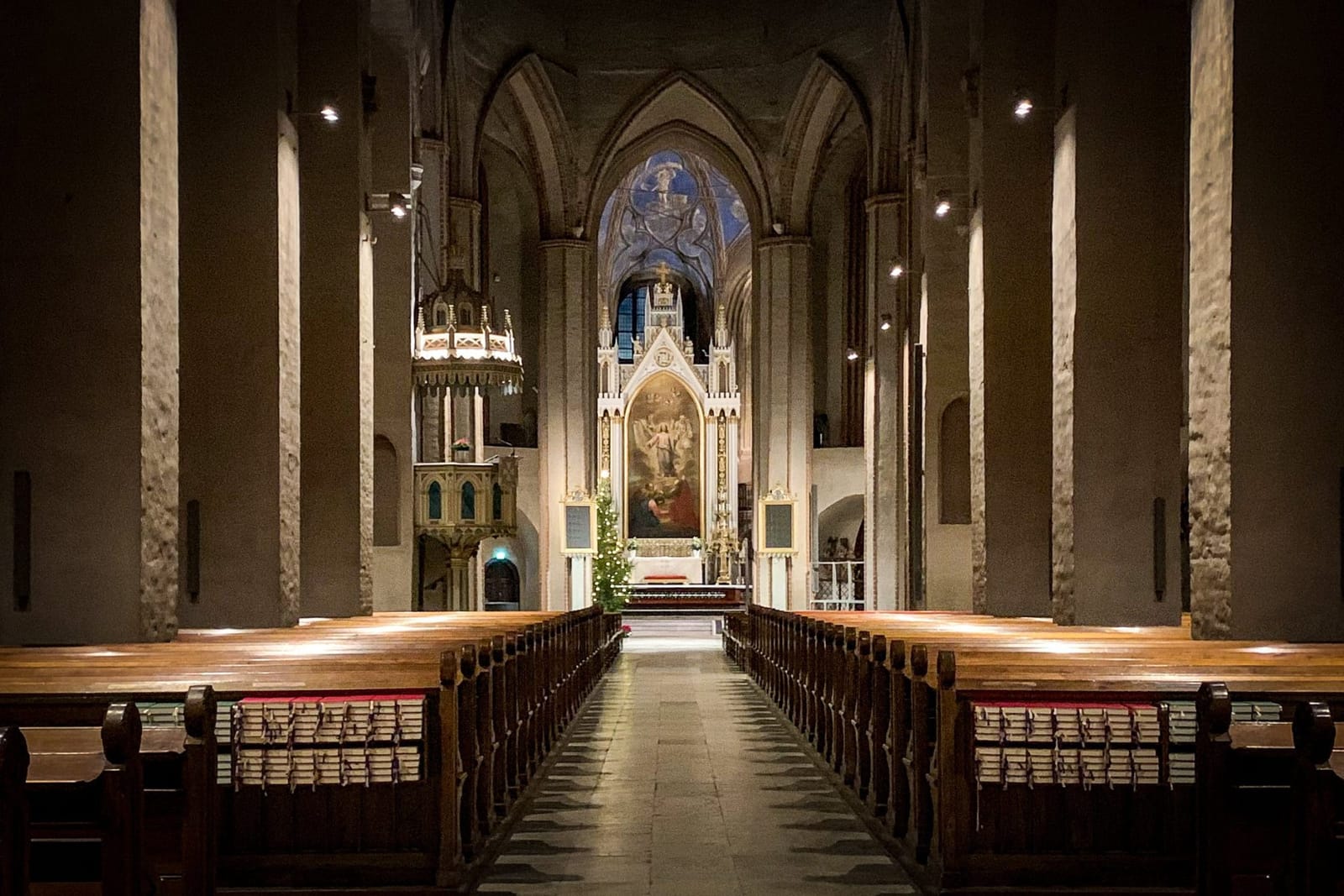Now begins the season of Arvo Pärt and private hymns for a better year. On New Year’s Day, I sat in the pews of a medieval cathedral in Turku, Finland. Completed in 1300, its tower featured the first public clock in Finland and it standardized the time for the entire region. Since 1944, the cathedral’s chiming bells have been broadcast on the radio each day at noon. There is something deeply reassuring about this ritual, knowing that a sound with a traceable source of stone and bronze has unified listeners for so many years.
I studied the painting of the Transfiguration over the apse, a scene that depicts the moment Jesus became radiant after traveling to a mountaintop to pray with Peter, Paul, and John. The prophets Moses and Elijah appeared in the clouds and a voice from the sky called him son. Why would Jesus not think he’d gone insane?
My mind drifts into a time beyond church bells and paintings and desert prophets. Standing in line at the supermarket the other day, I was suddenly overwhelmed by the idea that the world existed long before there were eyes to see it. This nervy sensation followed me into this cathedral. The realization that evolution might provide us with unimaginable senses tens of thousands of years into the future. That I will never know how this story ends or why it was written.
Only a few days into the new decade and we’re already overwhelmed by headlines about missiles, fires, drones, government paralysis, and dangerous weather. America is circling the drain. Australia is burning. A craving for new spiritual paths shaped the 1960s before boomeranging into the materialistic 1980s. Is this need resurfacing in our age of digital alienation and climate crises? I worry the future will become a breeding ground for religious extremism, cults promising to restore our screen-addled brains, and faith-dealers peddling solace in a scary new world of flood and fire. In the meantime, I bow my head and try my best to pray to god knows what.
Further reading: Turun tuomiokirkko; Transfiguration of Jesus, painted in 1836 by Fredrik Westin.





